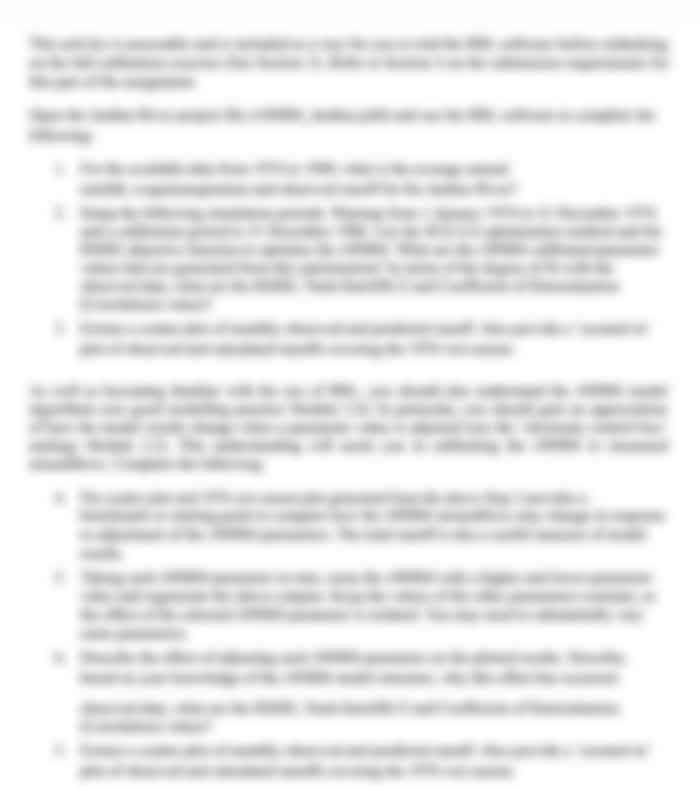Student Name Student ID No. Teacher Name Dr. Somaiya Yunus
- University :
Holmesglen TAFE Exam Question Bank is not sponsored or endorsed by this college or university.
Student Name Student ID No. Teacher Name Dr. Somaiya Yunus
Teacher Contact Somaiya.yunus@holmesglen.edu.au Program Name Bachelor of Business (Accounting)
Program Code BACC16
Subject Name Corporate Governance and Ethics
Subject Code BAC306
Department Graduate and Degree Programs
Semester & Year Semester 2, 2022
Time Allowed/Due Date Wednesday 12 October by 3:00 pm
Assessment Type Mini Case Study
Value of Assessment 25% of overall assessment
Assessment Conditions This is an individual assessment
Special Requirements N/A
DECLARATION
I am aware that penalties exist for cheating, plagiarism (copying) and unauthorised collusion with other students, or external consultants.
I am aware of the requirements covering style and layout standards as designated by my teacher/tutor.
For assessments other than those conducted in-class, I have retained a copy. I understand that uncollected assessments will be destroyed.
I certify that any paper version of this assignment which I have submitted or will submit is identical to the electronic version submitted or to be submitted.
Students signature: Date:
Possible Marks Actual Marks
Case Study 1 40 Case Study 2 40 Overall Report Structure 10 Case Presentation 10 Total 100 Convert to 25 Assignment Preparation and Submission Guidelines
Your submission for this assignment must not exceed 3500 words in length. The word limit applies to the entire assignment except references. You must attach the Holmesglen assessment declaration sheet to the front of your assignment. You must sign and date the assessment declaration sheet. You must ensure the clarity of your answer and the overall presentation of your assignment. Presentation includes grammar, spelling and compliance with the word limit. You must submit a properly referenced assignment that complies with the APA 7 citation style.
Submission Instruction
Electronic submission: Assignment must be submitted via turnitin located on BrightSpace. An originality report is available to students upon submission. Note: turnitin may take up to 24 hours to produce a report. Assignment with originality report level of more than 30% may indicate that the contents have more than 30% in similarity with assignment submitted by other students OR assignment has not been properlyreferenced. Assignment with originality report level exceeding 30% will be penalised. Serious breaches will be reported to the disciplinary panel. Students can re-submit assignment on BrightSpace as many times as necessary but the final submission both in electronic and in manual format must be made by the due date.
Hardcopy submission: Hand a hard copy to your lecturer during the class. A signed declaration form must be attached to the front of the assignment.
Late submission: Students can submit assignment on BrightSpace until 11:59 pm on the due date. Assignments not meeting these requirements will be subjected to a penalty of four (4) marks for poor presentation. Late submission is subjected to a penalty of 10% per calendar day.
PlagiarismPlagiarism is defined as presenting someone elses work, including the work of otherstudents, as ones own. Any ideas or materials taken from another source for eitherwritten or oral use must be fully acknowledged, unless the information is commonknowledge. All students are strongly advised to
go to https://holmesglen.edu.au/Students/Current-Students/Plagiarism/ and
read the PLAGIARISM POLICY
Specific Requirements:
Evidence of comprehensive review of extant literature and citing from a range of journal articles.
There should be In-text referencing in the body of the assignment.
Case Study 1:
Aviva is the UKs largest insurer and one of Europes leading providers of life and general insurance with over 36,000 employees and some 43 million customers worldwide. Its board of directors consists of twelve directors of whom eight are independent non-executive directors (three of these independent non-executive directors are female, there being no female executive directors on the board), plus the chairman, the executive deputy chairman, the chief financial officer, and the executive director for developed markets. There are five key board committees: audit, remuneration, nomination, corporate responsibility, and risk. The remuneration committee comprises three independent non-executive directors, one of whom chairs it. The remuneration committee, like many, seeks the advice of remuneration consultants when setting the pay packages for its executive directors, and the activities of the remuneration committee note that during 2011 the remuneration committee approved the appointment of FIT Remuneration Consultants in place of AON Hewitt New Bridge Street.
During the first part of 2012 Andrew Moss, the CEO of Aviva, announced restructuring plans which included Aviva Investors shedding more than one-tenth of its workforce; subsequently, in April 2012 he announced a simplification of the management structure, which saw some of its most respected executives leaving the company. At around this time, ABI issued an amber alert over Avivas remuneration report. With investor concern about Avivas executive pay proposals mounting, Aviva announced that it would review the executive pay proposals. Andrew Moss declined a pay rise of 46,000 but, nonetheless, looking back at 2011, his pay (excluding a long-term share incentive plan) rose by around 8.5 per cent, whilst Avivas shares lost around one-quarter of their value, which raised shareholders concerns of reward for poor
performance. However, the unease from institutional investors was not just about the executive pay proposals but also about the performance of Aviva in recent years, with share prices falling and Aviva underperforming compared to its peers. In early May 2012 Aviva became one of the few companies in the UK to suffer a shareholder defeat of its executive remuneration proposals since the say on pay was introduced in the UK some ten years ago. Just over a week later, Andrew Moss resigned from his post as CEO of Aviva. Following Andrew Mosss departure from Aviva, restructuring plans were introduced including thousands of jobs being cut, and the disposal of Avivas US operations. However, it was also a time of worsening economic conditions and a significant cut in shareholders dividend was also announced. CEO Mark Wilson is now leading Aviva and seeking to improve its performance and results.
Questions
a) What are the implications of shareholders not supporting executive remuneration proposals?
b) Discuss the ways in which Avivas board of directors could respond to their shareholders.
Case Study 2:
Singapore Airlines was founded in 1972, evolving from a regional airline to one of the most respected travel brands around the world. The Groups revenue was $15,565.5 million for the year ended 31 March 2015, and it achieved a net profit of $406.7 million.
Singapore Airlines has excellent disclosure of its corporate governance on its website. The Corporate Governance Report for the year ended 31 March 2014 shows that the board, which held four meetings in the financial year, comprised nine directors from diverse backgrounds with expertise in the finance, legal, industry, business, labour, and management fields. Seven of the nine directors are considered to be independent from management and from the companys substantial shareholder, Temasek Holdings; the remaining two are Mr Lucien Wong Yuen Kuai who is a director on the board of Temasek and Mr Goh Choon Phong who is the CEO.
There is comprehensive information given about each of the directors, for example, academic and professional qualifications; the date of first appointment as a director;
the date of last re-election as a director; board committees they serve on and their capacity (chair or member); current directorships in other listed companies; other major
appointments; other appointments; and directorships/appointments in the past three years.
Singapore Airlines Corporate Governance Report cross-references the various headings to the relevant principles in Singapores Code of Corporate Governance, for example, Board Membership and Performance (Principles 4 and 5).
There are five board committees that have been formed to assist the board in the execution of its responsibilities; these are the Board Executive Committee, Board Audit Committee, Board Compensation and Industrial Relations Committee, Board Nominating Committee, and Board Safety and Risk Committee. These committees have written mandates and operating procedures, which are reviewed periodically.
Board Executive Committee (ExCo) comprises of Mr Stephen Lee (Chairman), Mr Gautam Banerjee, Mr Goh Choon Phong, Ms Euleen Goh Yiu Kiang (retired from the board on 27 July 2013), and Mr Lucien Wong Yuen Kuai. The ExCo oversees the execution by management of the overall strategy, policies, directions, and guidelines set by the Board for the SIA Group. The ExCo also reviews and makes recommendations to the board on the annual operating and capital budgets and matters relating to the Groups wholly owned subsidiaries.
There is information about the remit and focus of each board committee, for example, leadership development and succession planning in the company remains a key focus for the Board Compensation and Industrial Relations Committee (BCIRC).
There is appropriate disclosure on the remuneration of directors, both in terms of the measures used and in relation to the number of directors fees. For example, in relation to short-term incentives which generally take the form of an annual profit-sharing bonus, payment of the variable bonus is based on employees achieving the target levels in the following: SIA Groups Return on Shareholders Fund; SIA Companys Operating Profit Margin; and SIA Companys Passenger Load Factor. In relation to directors fees for the financial year 2013/14, these amounted to $1,531,863 and were
based on the following rates (in Singapore $):
Board Retainers: Board Member 80,000; Chairman 160,000
Committee Retainers: Chairman of Executive Committee and Audit Committee 50,000; Chairman of other Board Committees, Member of Executive Committee and Audit Committee 35,000
Member of other Board Committees: 20,000
Attendance Fees HomeCity 5,000
InRegion 10,000
OutRegion 20,000
TeleconferenceNormal hours 1,000
TeleconferenceOdd hours 2,000
Furthermore, it was declared in the report that no employee of the Group who is an immediate family member of a director was paid a remuneration that exceeded $50,000 during the financial year ending 31 March 2014.
The company has received a number of awards over the years, for example, for its transparency and investor relations.
Questions
a) What are the main features of Singapore Airlines corporate governance structure?
b) To what extent does the board of directors appear to be diversified?END OF ASSIGNMENT

